A Step-by-Step Guide to Crafting the Perfect Braised Duck with Soybeans: Traditional Flavors Meets Modern Kitchen Techniques**
Braised duck with soybeans, a dish deeply rooted in culinary traditions, offers a harmonious blend of rich, savory flavors and tender textures. This hearty meal, often celebrated for its ability to warm the soul and satisfy the appetite, combines the earthy depth of soybeans with the succulent richness of duck meat. While the recipe may vary slightly across regions and households, the core principles of slow-cooking and flavor layering remain consistent. In this comprehensive guide, we’ll explore how to recreate this classic dish in your own kitchen, ensuring a result that is both authentic and adaptable to modern tastes. Whether you’re a seasoned home cook or a novice exploring global cuisines, this recipe promises to deliver a memorable dining experience.
Ingredients: Building the Foundation of Flavor
To embark on this culinary journey, gather the following ingredients. Each component plays a vital role in creating the dish’s signature taste and texture.
For the Duck:
- 1 whole duck (5–6 pounds), preferably free-range or organic
- 2 tablespoons kosher salt (for seasoning)
- 1 tablespoon black peppercorns (crushed)
- 2 tablespoons neutral cooking oil (such as canola or vegetable oil)
For the Soybean Base:
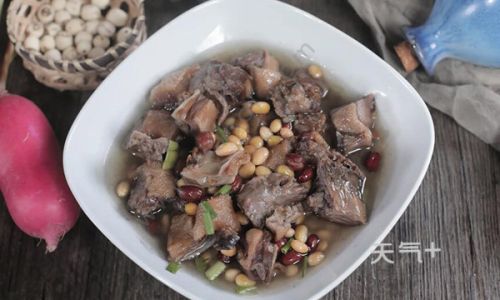
- 2 cups dried soybeans (or 4 cups cooked soybeans for a quicker option)
- 8 cups water (for soaking and cooking soybeans)
- 1 teaspoon baking soda (to soften dried soybeans, optional)
Aromatics and Seasonings:
- 1 medium yellow onion, diced
- 4 garlic cloves, minced
- 2-inch piece fresh ginger, peeled and grated
- 3–4 dried red chilies (adjust to taste)
- 2 star anise pods
- 1 cinnamon stick
- 1 tablespoon Sichuan peppercorns (or 1 teaspoon black peppercorns)
- 1/4 cup dark soy sauce (for color and depth)
- 1/4 cup light soy sauce (for salinity)
- 1/4 cup Shaoxing wine (or dry sherry as a substitute)
- 3 tablespoons brown sugar (light or dark, packed)
- 4 cups chicken or duck broth (low-sodium recommended)
Optional Enhancements:
- 1/2 cup dried shiitake mushrooms (rehydrated and sliced)
- 1 large carrot, peeled and chunked
- 1/4 cup fermented black beans (rinsed and mashed)
- Fresh cilantro or scallions (for garnish)
- Steamed jasmine rice or crusty bread (for serving)
Preparing the Duck: The Key to Tender Meat
The success of this dish hinges on properly preparing the duck. Begin by pat-drying the bird thoroughly with paper towels. This step ensures even browning and prevents excess splattering during searing. Next, season the duck generously inside and out with kosher salt and crushed black peppercorns. For deeper flavor, consider refrigerating the seasoned duck uncovered overnight—this dries the skin, resulting in a crispier texture during searing.
When ready to cook, heat a large Dutch oven or heavy-bottomed pot over medium-high heat. Add the neutral oil and swirl to coat the base. Carefully place the duck breast-side down into the pot. Allow it to sear undisturbed for 6–8 minutes, or until the skin turns golden brown and releases easily from the pot. Flip the duck using tongs or a sturdy spoon, searing the opposite side for an additional 5 minutes. Remove the duck from the pot and set it aside on a platter.
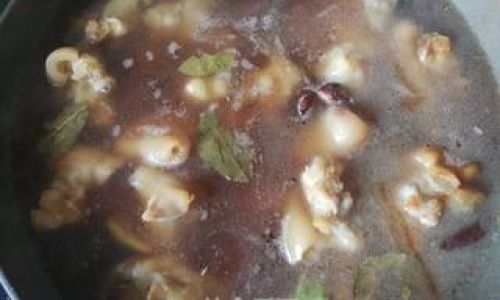
Mastering the Soybeans: From Dried to Delicious
Dried soybeans require advance preparation but reward with superior texture. Rinse the beans under cold water, then soak them in 8 cups of water with 1 teaspoon baking soda for 8–12 hours (or overnight). The baking soda accelerates softening but is optional. Drain and rinse the soaked beans, then transfer them to a saucepan. Cover with fresh water, bring to a boil, and simmer for 45–60 minutes until tender but not mushy. Drain and set aside.
If time is limited, use canned or pre-cooked soybeans. Rinse them thoroughly to remove excess sodium, then pat dry.
Building the Braising Liquid: A Symphony of Aromatics
In the same pot used for searing the duck, reduce the heat to medium. Add the diced onion, minced garlic, and grated ginger. Sauté for 4–5 minutes until fragrant and translucent. Stir in the dried red chilies, star anise, cinnamon stick, and Sichuan peppercorns, toasting them for 1–2 minutes to release their essential oils.
Deglaze the pot with Shaoxing wine, scraping up any browned bits from the bottom. This step, known as fond in French cuisine, adds layers of complexity to the dish. Stir in the dark and light soy sauces, followed by the brown sugar, until fully dissolved.
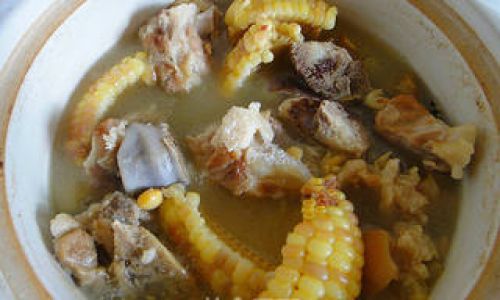
The Braising Process: Low and Slow Perfection
Return the seared duck to the pot, nestling it among the aromatics. Pour in the chicken or duck broth, ensuring the liquid covers three-quarters of the bird. Add the cooked soybeans (and optional mushrooms or carrots) around the duck. Increase the heat to bring the liquid to a boil, then immediately reduce to a gentle simmer.
Cover the pot with a tight-fitting lid and transfer it to a preheated 300°F (150°C) oven. Alternatively, maintain a low simmer on the stovetop, adjusting the heat as needed. Braise the duck for 2.5–3 hours, or until the meat is fork-tender and easily pulls away from the bone. Check periodically, adding water if the liquid reduces too much.
Finishing Touches: Elevating the Dish
Once the duck is tender, carefully transfer it to a cutting board. Use two forks to shred the meat, discarding excess fat and skin (or reserve for another use). Return the shredded duck to the pot, stirring gently to coat it in the braising liquid.
For a thicker sauce, remove 1 cup of liquid from the pot and whisk it with 2 tablespoons of cornstarch. Return this mixture to the pot, simmering for 5–7 minutes until the sauce thickens. Taste and adjust seasoning with additional soy sauce, sugar, or a splash of vinegar if desired.
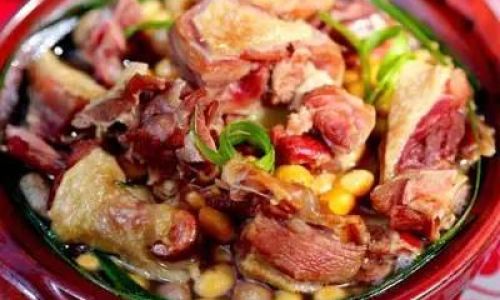
Serving Suggestions: Pairing and Presentation
Braised duck with soybeans shines when served over steamed jasmine rice, which absorbs the flavorful sauce. For a contrasting texture, offer crusty bread or roasted potatoes alongside. Garnish with fresh cilantro or sliced scallions to add a pop of color and freshness.
This dish also pairs beautifully with a crisp white wine, such as a Riesling, or a light lager beer. For a non-alcoholic option, serve with chilled jasmine tea or sparkling water with lime.
Tips for Success: Avoiding Common Pitfalls
- Searing the Duck: Ensure the pot is hot before adding the duck to achieve a golden, crispy skin. Avoid overcrowding the pot, which can cause steaming instead of searing.
- Soybean Texture: Overcooked soybeans become mushy, while undercooked ones remain firm. Test for doneness by mashing a bean against the pot’s side—it should yield easily but retain its shape.
- Balancing Flavors: The braising liquid should taste savory, slightly sweet, and subtly spicy. Adjust seasonings gradually, tasting as you go.
- Storage and Reheating: Leftovers keep refrigerated for up to 4 days. Reheat gently on the stovetop, adding a splash of broth if the sauce thickens too much.
Variations: Customizing the Recipe
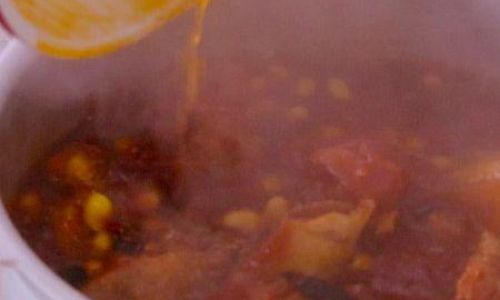
- Spicy Twist: Add 1–2 tablespoons of chili paste (such as gochujang or doubanjiang) during the braising phase.
- Vegetarian Adaptation: Substitute the duck with seitan or oyster mushrooms, and use vegetable broth.
- Herbal Infusion: Include a handful of fresh thyme or bay leaves with the aromatics.
- Umami Boost: Stir in a teaspoon of mushroom seasoning or a splash of oyster sauce before serving.
The Cultural Tapestry: A Brief History
While this recipe draws inspiration from Chinese and Southeast Asian traditions, its essence lies in the art of preserving and enhancing humble ingredients. Soybeans, a protein-rich staple, have nourished communities for millennia, while duck, once a luxury, became accessible through sustainable farming. Together, they symbolize resourcefulness and culinary ingenuity—qualities that resonate across borders.
Conclusion: A Dish Worth Savoring
Braised duck with soybeans is more than a meal; it’s a testament to the alchemy of slow cooking and the joy of sharing food with loved ones. By following these steps, you’ll create a dish that balances tradition with modern convenience, resulting in a plate that’s as comforting as it is impressive. So, gather your ingredients, embrace the process, and savor the rewards of your labor. Whether you’re hosting a dinner party or simply craving a taste of home, this recipe is sure to delight.
Final Note:
Cooking is an adventure, and every kitchen tells a story. Don’t hesitate to experiment with flavors, adjust seasonings, or add personal touches. After all, the best dishes are those made with care, curiosity, and a dash of creativity. Enjoy!





0 comments